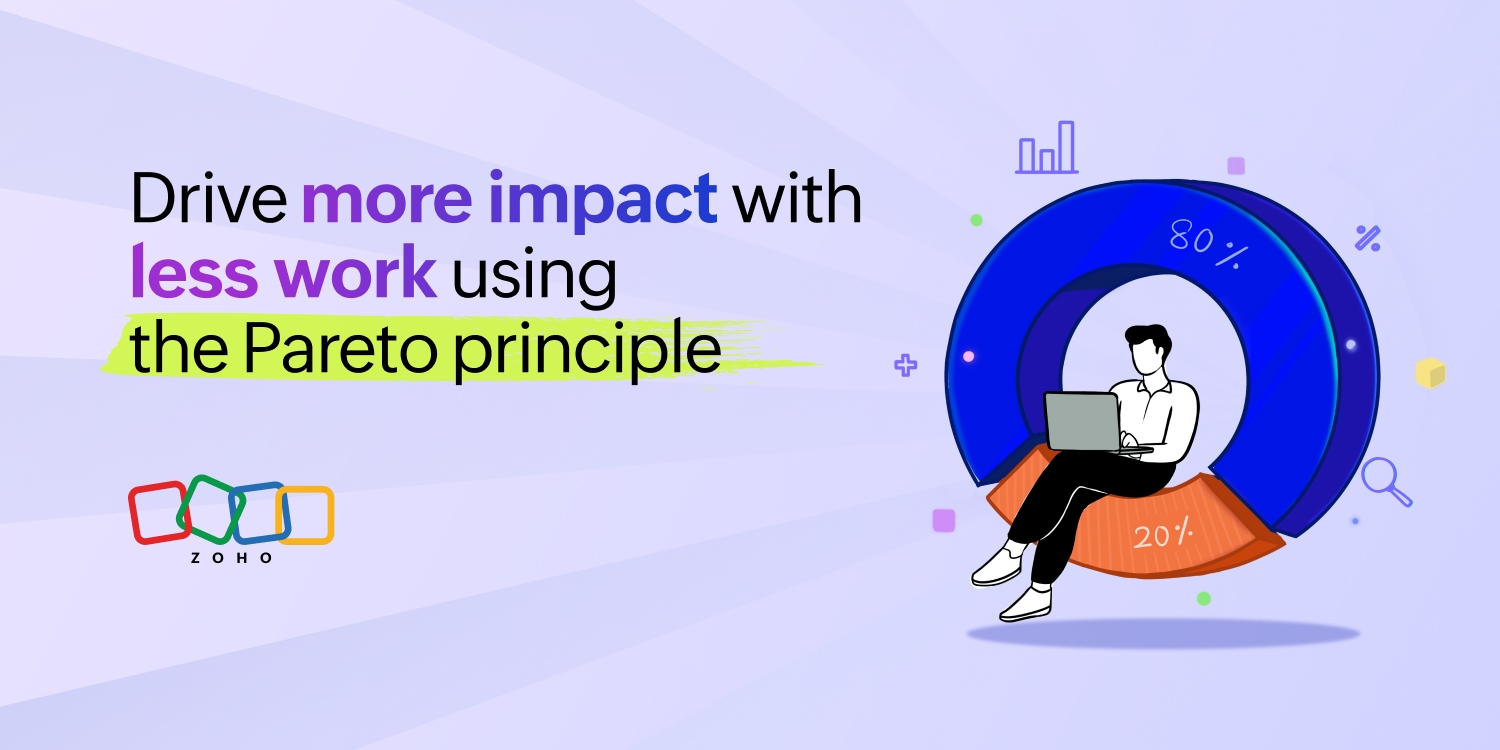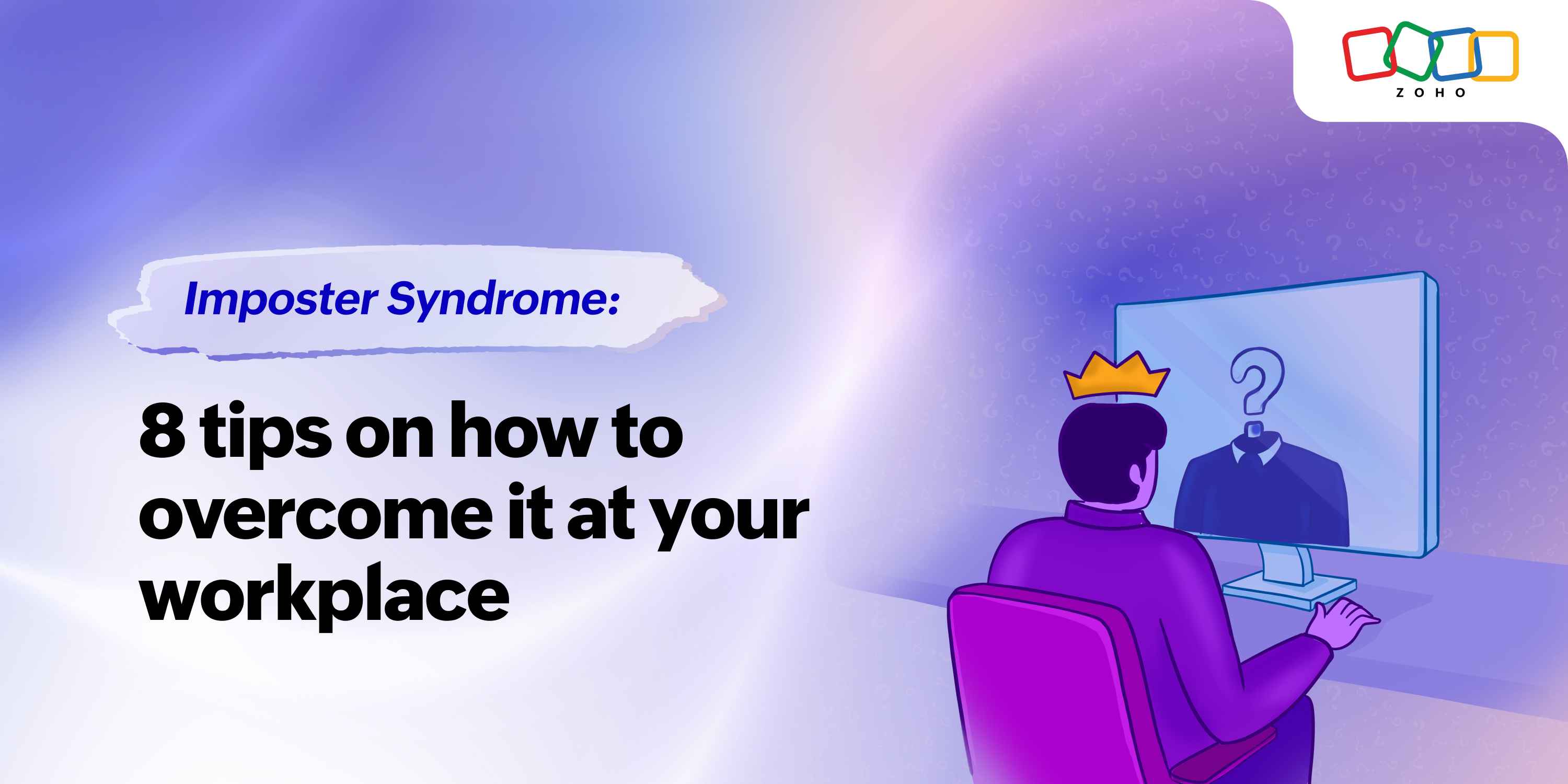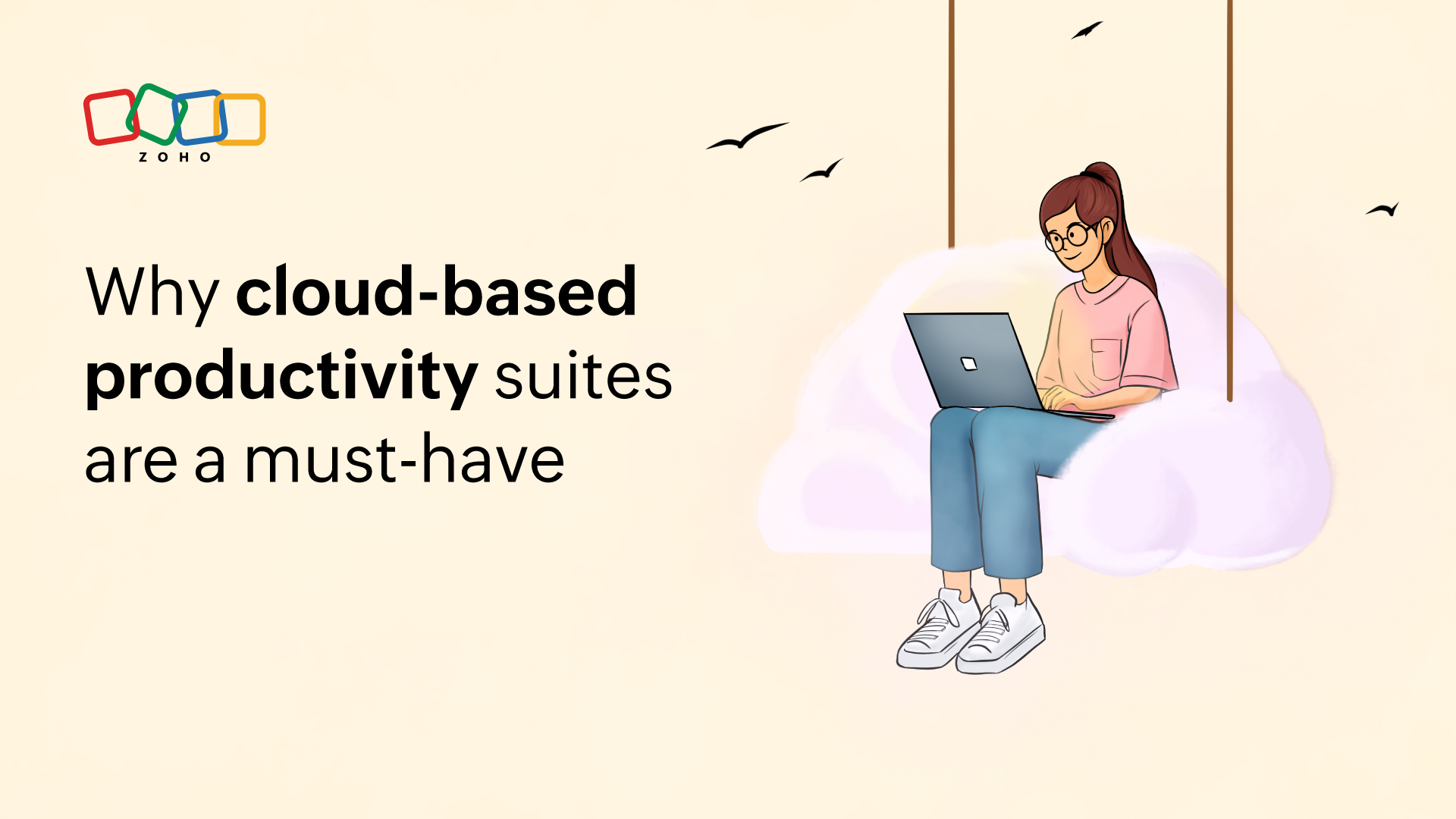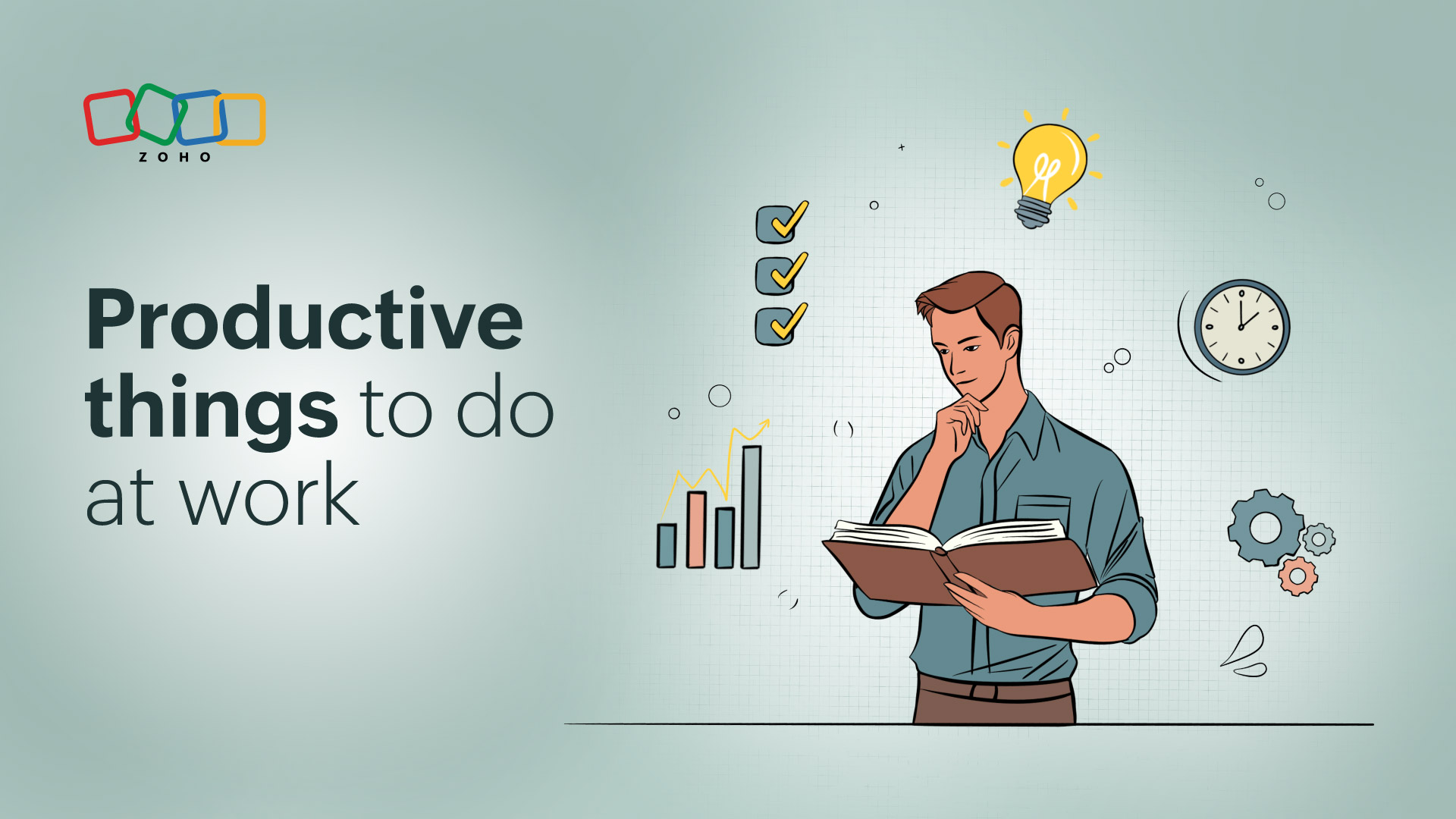- HOME
- All Topics
- Productivity in the workplace
- The Pareto principle (80/20 rule): Drive more impact with less work
The Pareto principle (80/20 rule): Drive more impact with less work
- Published : March 28, 2025
- Last Updated : March 28, 2025
- 72 Views
- 5 Min Read
Imagine this: you get to your job, spend eight hours working, and leave work only to feel unfulfilled because your time was spread thin over low-value tasks. It's a trap that most of us fall into.
But what if you could get 80% done with only 20% of your energy? That's the power of the Pareto principle.
What's the Pareto principle?
The Pareto principle, or the 80/20 rule, is a concept that says roughly 80% of output comes from 20% of effort. The key is to find the game-changing 20% that creates valuable outputs. The Pareto principle can be applied to a variety of fields such as business, personal life, and economics.

Implementing the Pareto principle can change you from being reactive to proactive, both in your workforce and personal life. With a bit of effort and focus, you'll be achieving big goals, like nailing a huge project or bonding with your loved ones.
How to find the most impactful 20%
The Pareto principle is the golden ticket to escaping the harsh reality of hustle culture and entering an era of less work and higher impact. To get this ticket, you'll first need to determine the 20% of work that creates 80% of your output.
Define your purpose
There's no one-size-fits-all guide to finding the high-impact 20% since it changes with different fields and designations. To find it, ask yourself this question: What are two to three tasks I can do to impress my higher-ups?
Keep track of tasks that drive high value
Write down two to three tasks that produce the most value for your company. Try analyzing past data to figure out which tasks give you the most value and eliminate the lower impact 80%. For example, your 80% might be chasing low-quality leads that yield poor results. Instead, you can focus on the 20% of valuable leads that improve your revenue numbers.
Test and reiterate to maximize value
Priorities are bound to change. Keep note of what drives the most value in your day-to-day tasks and adjust your strategies accordingly. Initially, your top 20% might involve resolving high-priority support tickets, but over time, it could evolve into building systems that empower your team to handle them more efficiently.
The Pareto principle in your daily life
Without the Pareto principle, you might spend your energy split between a variety of tasks such as checking emails, creating campaigns, analyzing data, communicating with clients, and more.
With the Pareto principle, you can reduce time spent on emails and lower priority client communications and direct your energy toward crafting high-impact campaigns that drive more sales and distilling data to create valuable intelligence for future campaigns.
Profession | Before | After |
Marketers | Running multiple campaigns with scattered focus | Focusing on high-impact campaigns that produce the best ROI |
Developers | Working on features that have less impact on the user experience | Prioritizing features that are valuable and solve critical pain points |
Sales reps | Following all leads with equal priority and underwhelming results | Keeping the conversation flowing with high-quality leads that bring in more revenue |
Content creators | Producing a variety of content without focus | Working on highly targeted content that resonates with the audience |
Project managers | Spreading their focus thin on multiple projects with minimal impact | Prioritizing impactful projects that bring significant results |
Customer support | Taking care of all support tickets equally, leading to delayed responses | Focusing on critical issues and addressing them, increasing customer satisfaction |
Advantages of the Pareto principle
The Pareto principle, when executed properly, can eliminate redundancies in your work and personal life. Less-impact things, such as spending a lot of time on emails and mindless social media scrolling, take a back seat.
Allows individuals and teams to be more effective
The immediate advantage of implementing the Pareto principle is making you more effective—both in your personal and professional life. Individuals and teams can let go of less-impact tasks and double down on tasks that move the needle.
Brings more ROI with less work and more reward
You'll naturally have a positive ROI since your value-to-effort ratio is high. After doing things like eliminating low-impact paid campaigns and cutting budget waste, all your efforts will be directed towards the 20% of effective channels that bring the most revenue.
Helps you spot and reevaluate tasks that drive less impact
This principle lets you spot and eliminate low-impact tasks that don't drive value. This doesn't mean that you immediately neglect all tasks that don't produce value; you'll either be delegating these or batching them together and working on them later.
Potential downsides of the Pareto principle
Just like everything, there are downsides to the Pareto principle. These minor issues can be easily sidestepped.
Less impactful but mandatory tasks get overlooked
With the Pareto principle, the entire focus is on the high-impact 20% and avoiding the other low-impact 80%. Things like checking emails and connecting with distant friends may not seem like they move the needle, but they're still an essential part of your life. Don't forget the 80% entirely.
Tip to avoid this: Practice balancing high-impact and maintenance tasks.
Risks employee burnout
Constantly working on high-impact tasks alone may sound ideal on paper, but it'll lead you toward burnout. To produce high-impact work, you need variety to sustain your work ethic.
Tip to avoid this: High impact doesn't mean burnout, so prioritize resting and recharging.
Incorrect identification of the 20%
Identifying the right 20% can be tricky. It requires self-reflection, trial and error, and regular practice. If you're focusing your entire energy on the wrong 20%, you may feel productive while actually not accomplishing major tasks.
Tip to avoid this: Reevaluate and readjust based on shifting priorities and situations.
How to apply the Pareto principle
Identifying the high-impact 20% and prioritizing it is the backbone of the Pareto principle. With this in your daily life, you can become highly valuable to your industry and society.
Make this your daily routine
The Pareto principle is not just for your work day; it elevates your personal life, too. Make note of tasks—not more than three—that are high impact and focus on them every day.
Work: Create high-value campaigns and secure big clients who drive 80% of your revenue.
Personal: Focus on the 20% of people who recharge you mentally instead of others who drain you.
Sunset the other 80%
Cutting low-impact tasks doesn't mean you forget them entirely—that may lead to problems down the road. Don't overlook less impactful yet essential tasks like responding to emails. The key here is to automate or delegate the 80%.
Work: Use automation tools to perform work with less ROI. Work that needs manual care can be outsourced to your associates or interns, whose 20% is assisting you.
Personal: Declutter your space by getting rid of things you don't use. 20% of your things likely get used 80% of the time.
Find the right balance between impactful and essential
Instead of diverting all of your energy toward the high-impact 20% and neglecting the 80%, try to find harmony and balance. Some of the 80% you avoid might be essential.
Work: While focusing on impactful campaigns, spend some time doing essential chores like paying bills and checking emails.
Personal: In your free time, go for a small walk. This may not seem like a productive thing, but it'll help you feel recharged and ready to tackle your tasks.
Summing up
In short, the Pareto principle, or the 80/20 rule, states that 20% of your work accounts for 80% of your output. Finding that 20% and directing your maximum focus toward it can yield high-value results.
The Pareto principle can change the way you work and the results you produce. You'll go from being busy to being productive and valuable—both at work and in your personal life.
Implement this in your daily routine and watch the shift toward a valuable future begin!
 Rohan
RohanRohan Samuel is a product marketer for Zoho Workplace who talks about workplace security, productivity, and collaboration. He is a highly enthusiastic writer who delights in evoking visual imagination with words. He also enjoys playing football with his buddies and traveling to new places.










